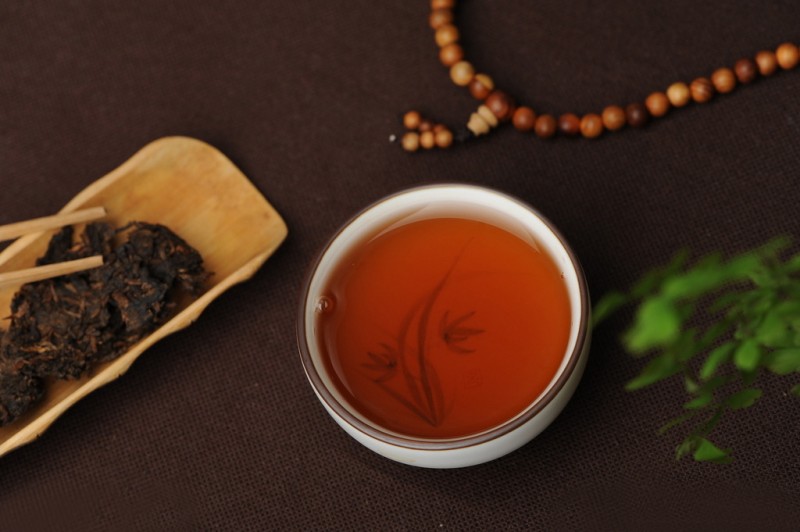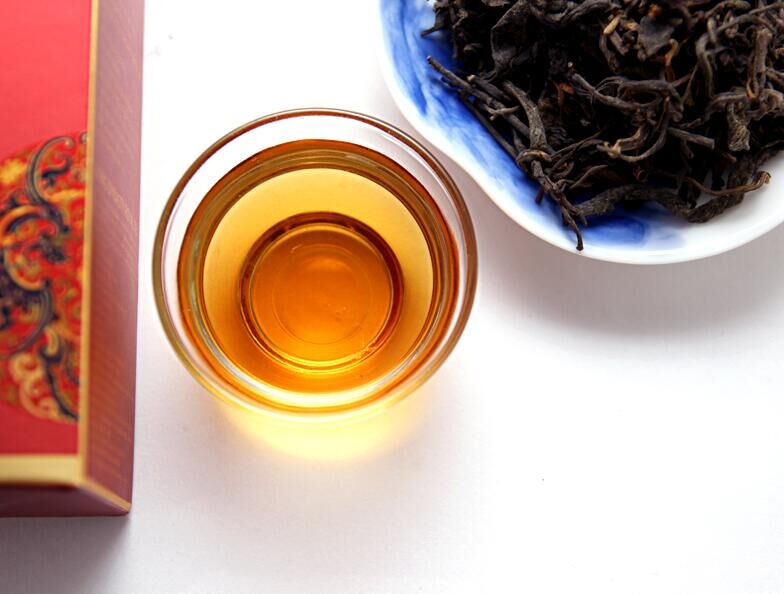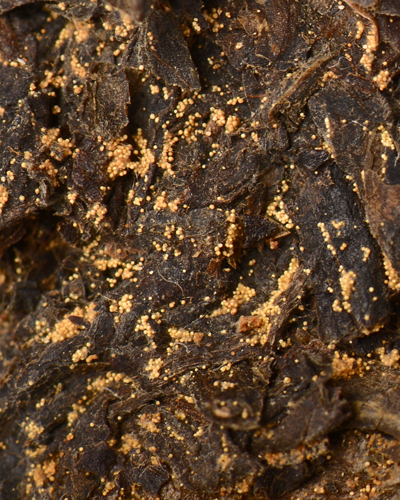Eurotium cristatum: A probiotic fungus, it is a natural probiotic body formed under specific temperature and humidity conditions during the 'flowering' process of Fuzhuan tea, commonly known as 'Golden Flower.' In national standards, Fuzhuan tea is the only variety of dark tea that requires the 'Eurotium cristatum' indicator. The 'Golden Flower' secretes amylase and oxidase from tea leaves, catalyzing the conversion of starch into monosaccharides and oxidizing polyphenolic compounds, turning the tea soup reddish-brown and eliminating coarse flavors. It enhances the taste, making it mellower, smoother, and sweeter with a lingering aftertaste. It has strong effects on digestion, lowering blood lipids, dissolving fats, and regulating carbohydrate metabolism. The size of its particles changes with humidity, resembling 'Milan' when flourishing and shrinking to small white spots when withered, without affecting its quality or efficacy. The 'Golden Flower'—a microorganism discovered less than 30 years ago on Earth—was previously found only occasionally on thousand-year-old lingzhi mushrooms. Especially in Hunan Anhua dark tea, such as Fuzhuan tea and Qianliang tea, the 'Golden Flower' grows extremely densely, making it unique to Anhua dark tea. Under high magnification, the 'Golden Flower' appears golden and spherical, like a mushroom. Extensive research and clinical data show that Eurotium cristatum's effects are very similar to those of thousand-year-old lingzhi spore powder, effectively boosting human immunity, preventing cancer, anti-oxidation, anti-aging, and prolonging life. Additionally, dark tea's fat-reducing and weight-loss effects far surpass those of any other fungal species, making it a global research hotspot.

Selenium: (1) Antioxidant Function of Selenium
Oxidation is a natural phenomenon, like rust on iron pipes. The human body also experiences oxidation, which is necessary for life activities. However, excessive oxidation can cause damage, medically termed 'oxidative damage,' with free radicals being the culprit. Free radicals have strong oxidative capabilities, attacking biological macromolecules (nucleic acids, proteins, fats, sugars) and causing cellular damage, leading to tissue deterioration and disease. Selenium boosts the activity of antioxidant enzymes like catalase and glutathione peroxidase, protecting cells from oxidative damage.

(2) Selenium and Diseases
1. Cancer
Selenium, known as the 'King of Anti-Cancer,' helps inhibit tumor growth, blocks cancer cell energy sources, and alleviates chemotherapy side effects. Americans take 200 mcg daily for cancer prevention.
2. Cardiovascular Diseases
Selenium protects heart cells, reduces arterial plaque, and improves blood flow, preventing heart disease and strokes.
3. Diabetes
Selenium deficiency is a diabetes trigger. It mimics insulin, regulates blood sugar, and prevents complications.
4. Liver Diseases
Selenium protects liver cells, aids detoxification, and reduces alcohol-related damage.
5. Asthma
Selenium improves lung function and reduces asthma symptoms.
6. Prostate Diseases
Selenium enhances immunity, reduces inflammation, and prevents infections.
7. Gastritis and Constipation
Selenium eliminates gut pathogens, repairs stomach lining, and relieves constipation.
8. Eye Diseases
Selenium deficiency leads to vision problems like cataracts. Eagles, with high eye selenium, have sharp vision.
9. Infertility
Selenium protects sperm from oxidative damage, improving fertility.

Germanium: Germanium fights cancer, boosts immunity, and detoxifies the body. It is abundant in Anhua dark tea, offering anti-aging and disease prevention benefits.
Tea Polysaccharides: Used traditionally for diabetes, tea polysaccharides lower blood sugar and lipids, protect against radiation, and enhance immunity. Coarse tea has higher polysaccharide content, making it more effective.